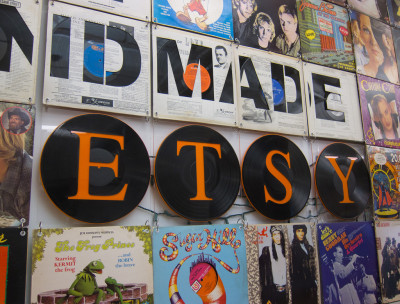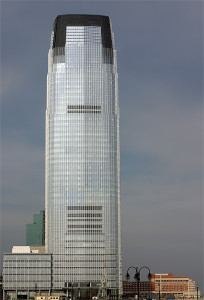By Alexis Fitts April 17, 2015
Google Search Overreach
The European Commission filed formal charges against Google on Wednesday, alleging that the company favors its own products and services over those of its competitors in search results. Skewing results to benefit its own business interests would give the search-giant incredible power over its rivals—power that the antitrust complaint seeks to limit.
Limiting Google’s influence is especially important in Europe, where Google is the dominant search engine by far. About 92 percent of European searches use Google—by comparison, this number is 75 percent in the U.S.— while 71 percent of European mobile phone owners use the Google-produced Android. A separate investigation is looking into whether Androids favor Google-backed apps in their store.
Amit Singhal, Senior Vice President of Google Search, defended the company’s practices in an official blog post published Wednesday, arguing that the diversity of information streams available to Internet users, such as Facebook and Twitter, limits Google’s influence. “While Google may be the most used search engine, people can now find and access information in numerous different ways,” Singhal wrote.
If Google loses the case, it stands to pay a record-breaking antitrust fine: US$6.5 billion, or 10 percent of Google’s annual revenue. Meanwhile, the New York Times reports that Microsoft has been quietly feuling the case against Google. Microsoft has connections to the three complainants who filed the lawsuits that led to the investigation and spent more lobbying dollars than any other European company. Microsoft has its own history with the EC, which charged the software corporation with abusing its majority share of the personal computer market after a complaint was filed by Sun Microsystems. (Microsoft paid US$535 million in 2000.)

Etsy headquarters in Brooklyn, New York. ©Scott Beale
Etsy Completes IPO
Etsy, the e-commerce marketplace for handcrafts, went public Thursday, raising more than $287 million—exceeding expectations and giving the company a value of over $3.5 billion. Etsy stock was initially priced at $16 a share, but jumped to $32 shortly after opening.
In line with the company’s small scale ideology, The Wall Street Journal reports that vendors were allowed to buy small shares of Etsy stock—ranging from $100 to $2,500—in advance of the IPO, while another 10 percent of shares were set aside small investors.
But now Etsy faces the challenge of scaling-up while still retaining its craftsy image. Founded in 2005, Etsy has grown steadily, accumulating 54 million members at the close of 2014, including 1.4 million sellers. As it has increased in size, the company has struggled to maintain the quality of its homespun goods. A few years ago, it relaxed rules banning certain manufacturing techniques and has been charged with allowing wholesalers touse the platform to hawk their wares.
In 2012 Etsy became a B corporation, committing to a set of best practices, including energy efficiency and compensation (employees are paid 40 percent above local living wage.) The largest B corporation to go public, Etsy still isn’t profitable. Etsy highlighted its uncertain business model under “Risks” in the company’s filing: “We have a history of operating losses and we may not achieve or maintain profitability in the future.” Yet despite its hazy revenue model, the IPO shows that people are betting Etsy has a bright future.
Fight for $15 in Chicago, with Chicago Tribune Grinch, December 2013. © Backbone Campaign
Workers Rally for $15
Fast food workers across the country rallied on Wednesday, in a nation-wide protest advocating for an increased minimum wage. The protests, dubbed “Fight for $15,” took place in 230 cities and attracted over 60,000 demonstrators, in an event organizers say is the largest protest of low-wage workers in history. “Fight for $15” participants advocate for a $15 per hour minimum wage, more than doubling the current US federal minimum of $7.25.
“Fight for $15” stems from a series of fast-food worker strikes in November of 2012. Since then, the movement has expanded beyond the restaurant industry to include retail workers, adjunct professors, home-care assistants and other low-wage workers. According to The Guardian, The Service Employees International Union, which represents janitors, security guards, hospital aids, and nursing home employees, has spent over $25 million on the campaign.
While the focus of the protests, thus far, has been on McDonald’s, WalMart, and other big retail and fast-food chains, a rapid hike in minimum wage could have rippling effects on small businesses. After Oakland increased its minimum wage 36 percent—from a minimum of $9 to $12.25—some restaurants have compensated by adding service charges, doing away with tips, or increasing prices by as much as 20 percent.
In a press conference Tuesday New York City Comptroller Scott Stringer pushed for the increased wages, telling reporters that better wages would decrease Food Stamps and Medicaid spending by “$200 to $500 million annually.” President Barack Obama has also advocated for a hike, albeit a smaller one, in the national minimum wage—to $10.10.

The Goldman Sachs tower on the Hudson River, New Jersey. ©Waldemar Koscielny
Goldman’s Return
Goldman Sachs Group Inc. announced a dramatic 40 percent increase in first quarter earnings Thursday, an event that The Wall Street Journal is calling the firm’s “best ‘told you so’ moment in years.” The earnings rose on higher trading revenue, attributable primarily to a jolt of trading activity in January, but analysts are taking it as a signal Goldman can thrive within a difficult environment.
The earnings are the firm’s highest since the first quarter of 2010. First quarter net income rose to $2.75 billion, or $5.94 per share. Revenue climbed to $10.62 billion, from $9.33 billion a year ago, in part on 10 percent increase in revenue from trading in fixed income, currencies and commodities.
According to Reuters, Goldman Chief Executive Lloyd Blankfein attributed much of Goldman’s first quarter success to the firm’s emphasis on fixed-income and commodity trading, arguing that the bank will be able to capture and retain the market share that others are abandoning. Goldman’s strong quarter comes in spite of an 11 percent increase in employee compensation versus the year ago quarter, with nearly $4.46 billion distributed to staffers in the first three months of 2015—an average of $129,622 per employee.
The Magic Kingdom, Windermere, Florida, New Year’s Eve. ©Jeff Krause
Re-Working American Leisure
Fast Company writer Austin Carr takes a deep-dive look at Walt Disney Co. CEO Bob Iger’s attempt at modernizing the company’s iconic Disneyland theme parks—a plan ambiguously named MyMagic+. At the core of the reinvention is “theMagicBand,” a wristband that would allow guests to make purchases, gain entry, and interact with the attractions at the parks…all while building a large data set for Disney. It’s a complete reinvisioning of the Magic Kingdom, and a plan that Iger is banking his reputation at the company on. “The theater was quiet, the elation gone,” Carr writes, describing the initial presentation of the redesign. “Iger repeated, ‘This better work.’”
This entry was posted on Friday, April 17th, 2015 at 2:09 pm. It is filed under Week in Review and tagged with Disneyland makeover, Etsy IPO, Goldman Sachs earnings, Google antitrust, Microsoft antitrust, minimum wage protest. You can follow any responses to this entry through the RSS 2.0 feed.
Comments are closed.
